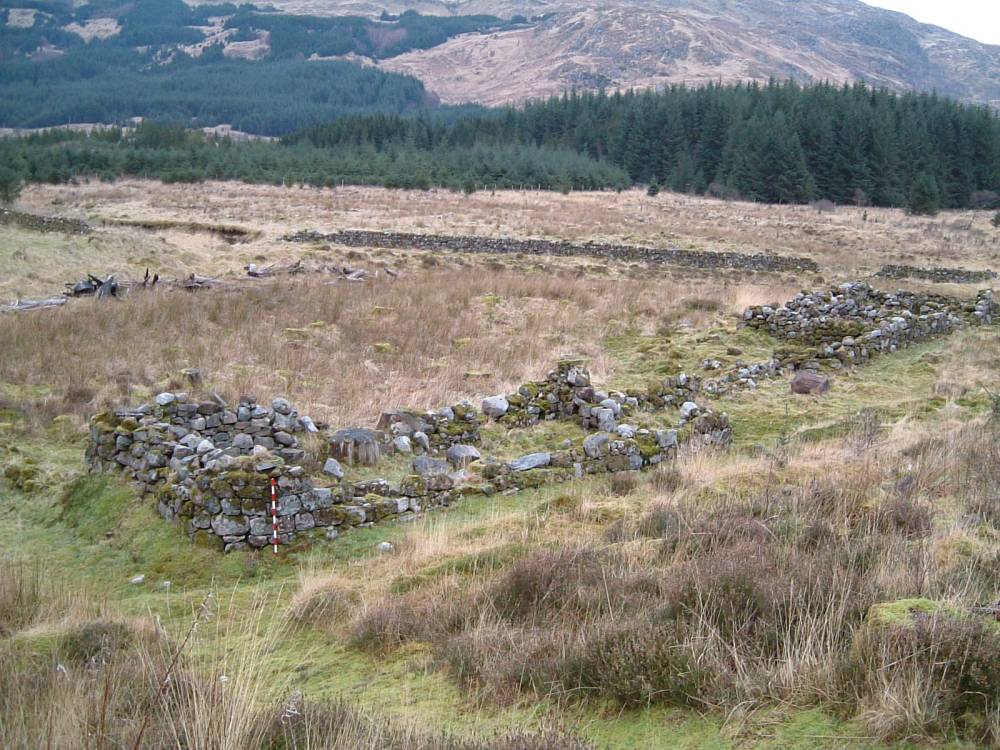Two Clearances at Inniemore
© Dr Jennie Robertson
Two Clearances at Inniemore
“The day of flitting came. The officers of the law came along with it, and the shelter of a house, even for one night more, was not to be got. It was necessary to depart. The hissing of the fire on the flag of the hearth as they were drowning it, reached my heart ... On the day of our leaving Inniemore I thought my heart would rend ... We sat for a time on Knock-nan-Carn to take the last look at the place where we had been brought up. The houses were already stripped.” With these words, Mary Cameron described the wholesale eviction from Inniemore township. This is one of few first-hand accounts of the Clearances,
Inniemore can be reached via a footpath. Recorded by 1674, it was a thriving community with a population of 45 in 1779 and probably more by the early 19th century. However, in 1824 Miss Christina Stewart of Edinburgh, the new owner of Glenmorvern Estate, cleared two of its five settlements, including Inniemore. Only a shepherd remained but, by 1851, the settlement had been abandoned.
In the 1930s the area was acquired by the Forestry Commission who planted it with conifers. In 1993, I undertook an archaeological survey of the village prior to a ‘second clearance’- the harvesting of these trees. 22 houses and outbuildings were recorded along with four kailyards, as well as smaller enclosures, and seven corn-drying kilns, all enclosed within a head dyke and accompanied by evidence of arable farming.
The trees were felled carefully and the remains suffered very little damage. Today there is a footpath around the houses and a solar-powered audio player where you can listen to Mary Cameron’s story.
As told by Dr Jennie Robertson, archaeologist and resident of Morvern
More information on visiting the area can be found here.
